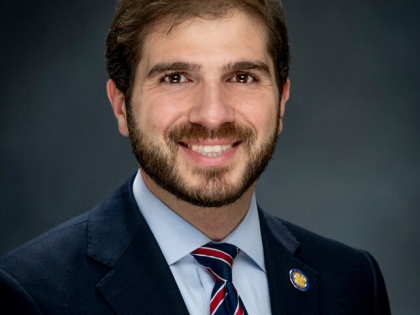
EXCLUSIVE: Gounardes, Brannan want city to forgive fines for eateries in NYC Open Restaurants program
With New York City delaying indoor dining during Phase 3 of the city’s reopening, restaurants are struggling despite NYC Open Restaurants, which is an effort to implement a citywide multi-phase program to expand outdoor seating options for food establishments to promote open space, enhance social distancing, and help them rebound.
According to local restaurants and several reports, the program added new guidelines after the initial set of rules was released in June, giving restaurants only 24 hours to comply and costing them thousands of dollars.
State Senator Andrew Gounardes and Councilmember Justin Brannan are demanding that the city forgive any fines levied in the NYC Open Restaurants program on restaurant owners who have been forced to change their outdoor seating plans due to the shifting guidelines.
“It is outrageous to cause local restaurants, already struggling to stay in business, to have to spend thousands of extra dollars to comply with changing guidelines,” said Gounardes. “It’s great that the city was able to start this program on a short timeline, but that cannot be an excuse for adding changing the rules after restaurants already complied — the definition of red tape and bureaucracy. The city must forgive any fines levied under this program and commit to clear, consistent guidelines going forward.”
““No matter what, safety must always come first,” said Brannan. “I understand this program is brand new and was enacted at a frenetic pace. I also understand the need to get the guidelines right. But business owners should not be penalized for the city moving the goalposts. Fines should be forgiven, and if guidelines change yet again, then business owners need to be given more time to fix – otherwise we are hurting our small businesses, and this program was supposed to help them get through this tough time.”
According to the New York City Department of Transportation (DOT), for roadway seating, restaurants must create a protective barrier, such as planters or objects of similar size and weight, on all three sides of the seating perimeter that are in the roadway, to separate seating from the travel lane. Such barriers must be at least 18 inches long and 30-36 inches high (excluding plantings) on all three sides that are in the roadway, to preserve visibility for motorists and provide protection for patrons.
However, according to The New York Times, the department’s first set of guidelines permitted outdoor seating areas on streets with one or two lanes of traffic, to be set off by “stanchions, barricades or planters, spaced at a maximum 5 feet apart.”
“I started a Small Business Recovery Advisory Group because I know our local businesses, which make our neighborhoods great places to live, are struggling,” said Gounardes. “I have been working closely with our local business owners to hear from them about their needs. Fining small businesses who have already paid thousands of dollars extra to comply with regulations would not help anyone.”
